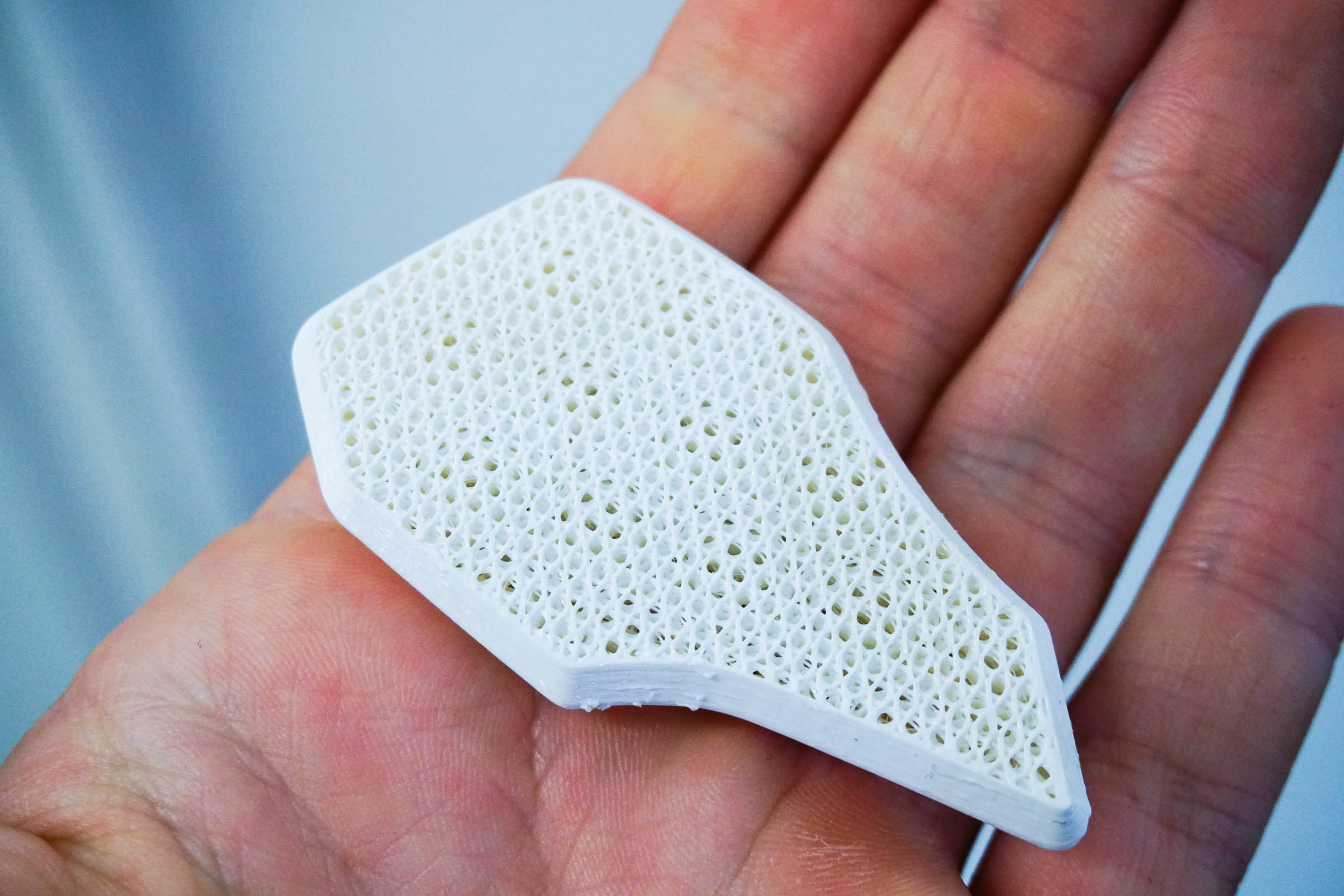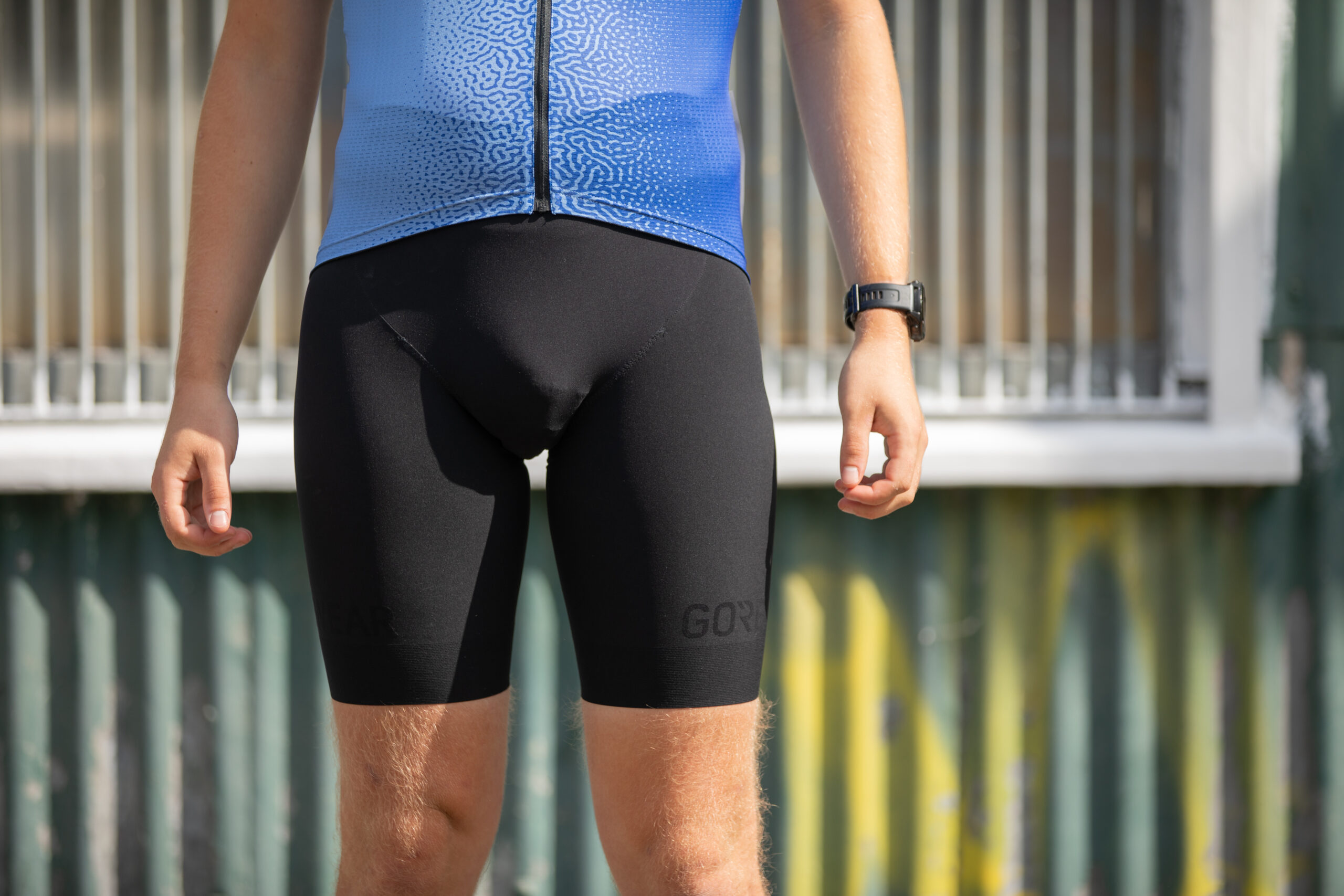A glimpse at the Gore Ultimate Bib Shorts, featuring new Elastic Interface 3D-printed N3X technology
Gore’s Ultimate Bib Shorts are one of only two products on the market to use Elastic Interface’s new 3D-printed Expert N3X chamois.
The chamois is constructed from a unique 3D design, claimed to be more comfortable than a traditional foam pad.
3D-printed components and accessories, such as saddles, handlebar tape and gloves, are now commonplace.
Gore says the Ultimate Bib Shorts are the perfect companion for long road and gravel rides, and provide “the ultimate support for intense rides”, suggesting they’re also at home in a racing scenario.
Debuted at Eurobike 2022, this is the first 3D-printed chamois, and has taken two years to make its way onto production shorts.
As is to be expected with cutting-edge tech, the Gore Ultimate Bib Shorts sit at the top of the range and will set you back £251.99 / €279.95.
A new dawn for chamois tech?

Elastic Interface’s Expert N3X 3D-printed insert is manufactured in Italy using a specially designed 3D printer.
The N3X pad is claimed to be more comfortable than a traditional foam pad because Elastic Interface has more control over its technical properties during construction.
As with 3D-printed saddles, Elastic Interface can control the pad’s density (how squishy it is) with a higher degree of localised control.

The open-cell lattice structure is claimed to improve airflow, wicking away moisture and keeping you cool.
In addition, the unnamed hydrophobic material is said to be quick-drying, making it ideal for hot conditions.
In the hand, the chamois feels very different from a traditional foam pad and, as is common on 3D-printed saddles, the front of the pad is noticeably squishier than the rear.

The way the front of the pad is attached in these Gore shorts is also interesting. It uses a suspended insert (separate from the main panel of the shorts), which eventually meets the front of the hem. Gore claims this further helps to keep the pad in place.
Elsewhere, the bib straps feel pretty minimal, with Gore designing them for maximum breathability and even tension.
Will 3D printing take off on bib shorts?

While 3D-printing has become common for saddles, it will be interesting to see how clothing brands respond.
The chamois is also specced on X-Bionic’s Corefusion Compression bib shorts, which retail for a more fierce £325 / $455 / €329. We expect further brands to launch options in due course.
While there are undeniable benefits for saddles, the shape of the saddle is far more important and is what dictates rider comfort.

The shape of a chamois is more limited and if a clothing brand thinks it has got a more comfortable recipe, uptake may not be as prolific.
It will also be interesting to see whether alternative 3D-printed chamois designs emerge.
For example, Specialized and Fizik saddles use tech in their polymer matrix uppers from the same brand – Carbon 3D.
Selle Italia and Posedla, for example, use different technologies for their 3D-printed padding.
Either way, it’s exciting to see new chamois technology – an area that has hardly seen headline-worthy development for some years. We’ll let you know what we think by way of a full review of the Gore Ultimate Bib Shorts soon.